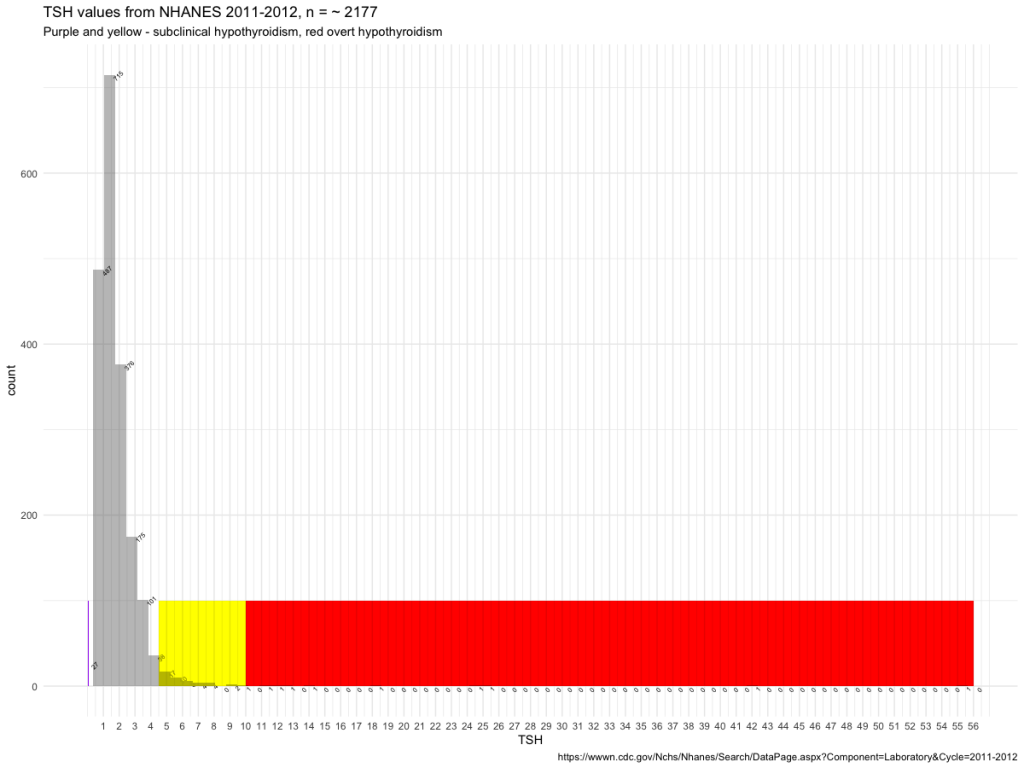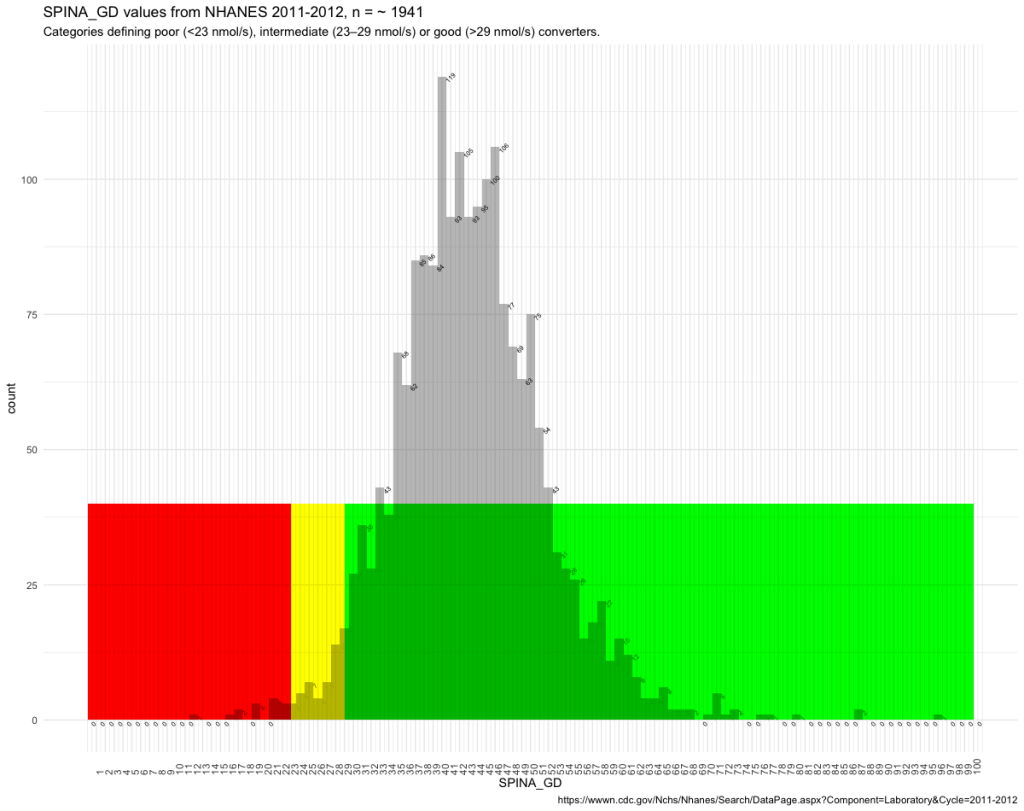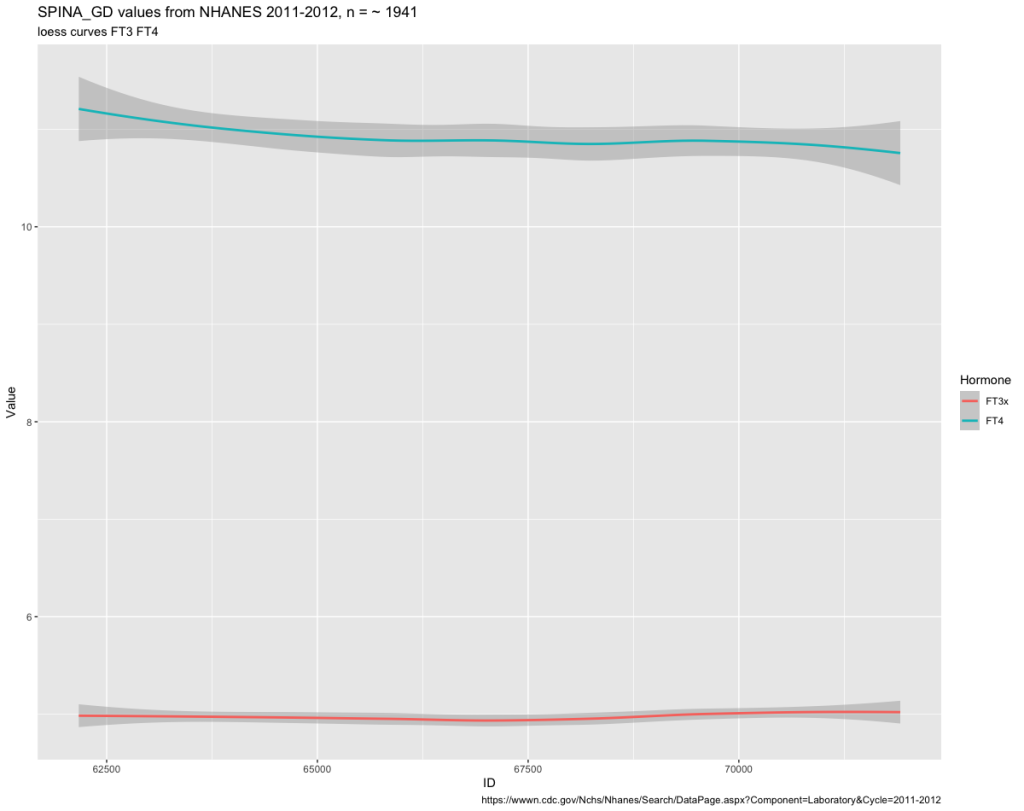There is an ongoing debate on the quality of life of hypothyroid patients. Some 10% of patients report hypothyroid symptoms although they are pharmacologically compensated.
Doctors may have different treatment goals:
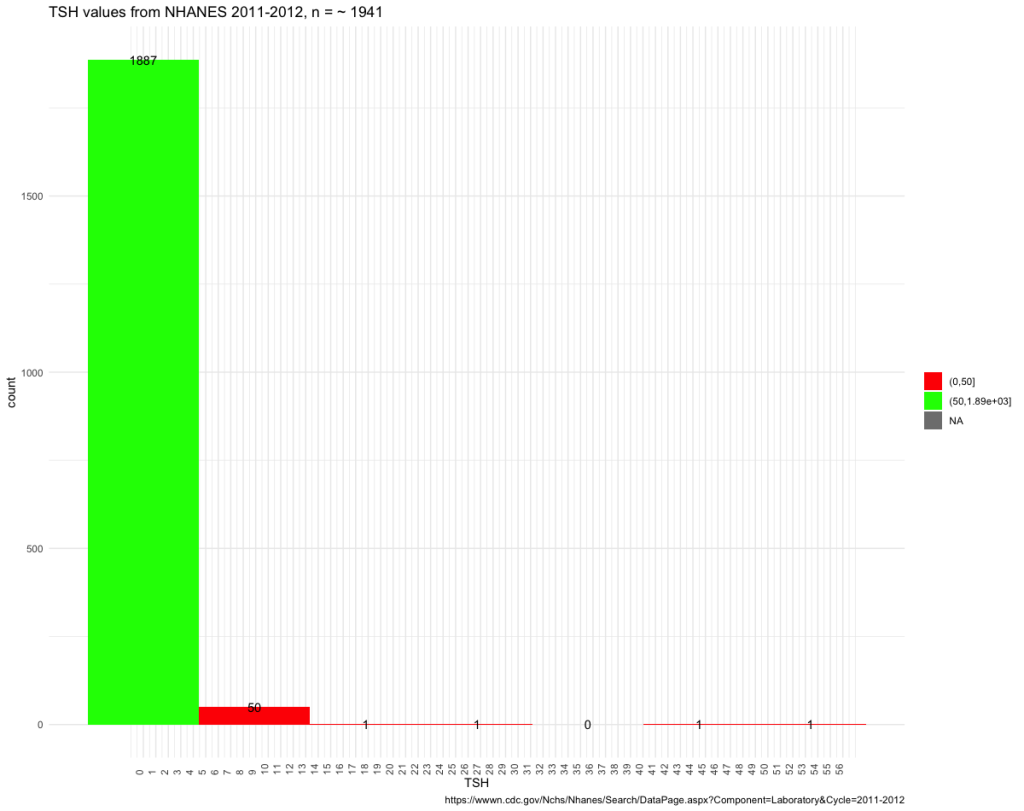
When the patients TSH is in the green range they are satisfied with the treatment result.
Others choose a more refined treatment goal:
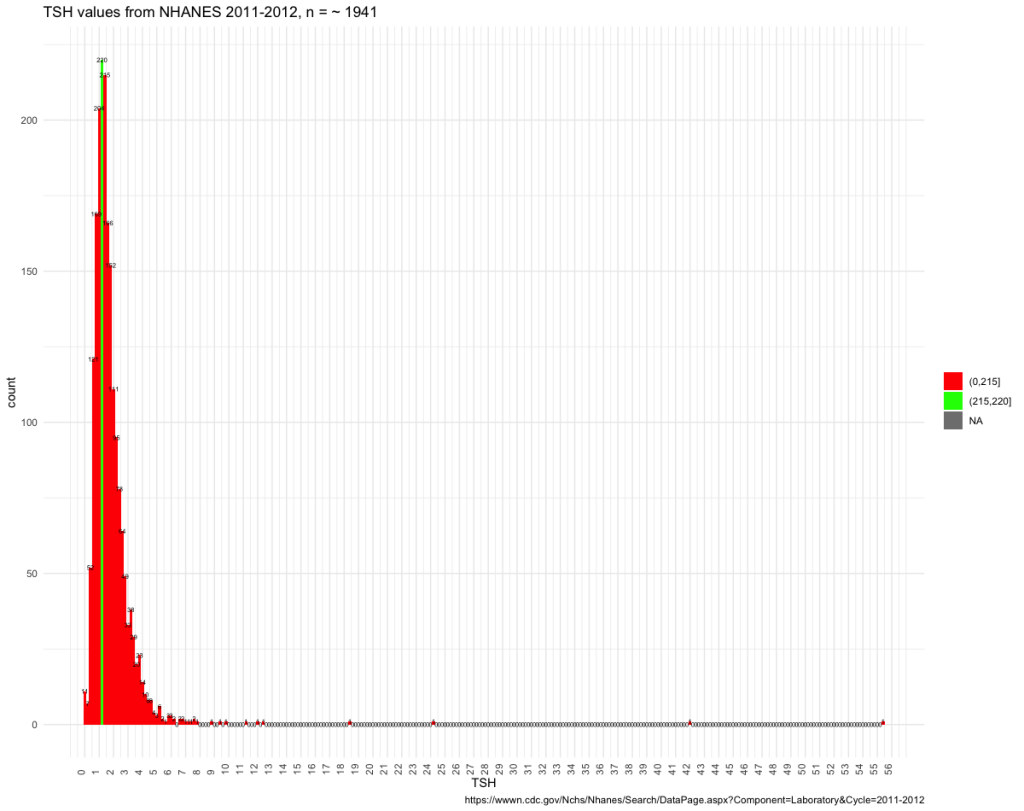
Seeking the exact thyroid profile that suits the patient.
Patients are individual and so are their TSH values.
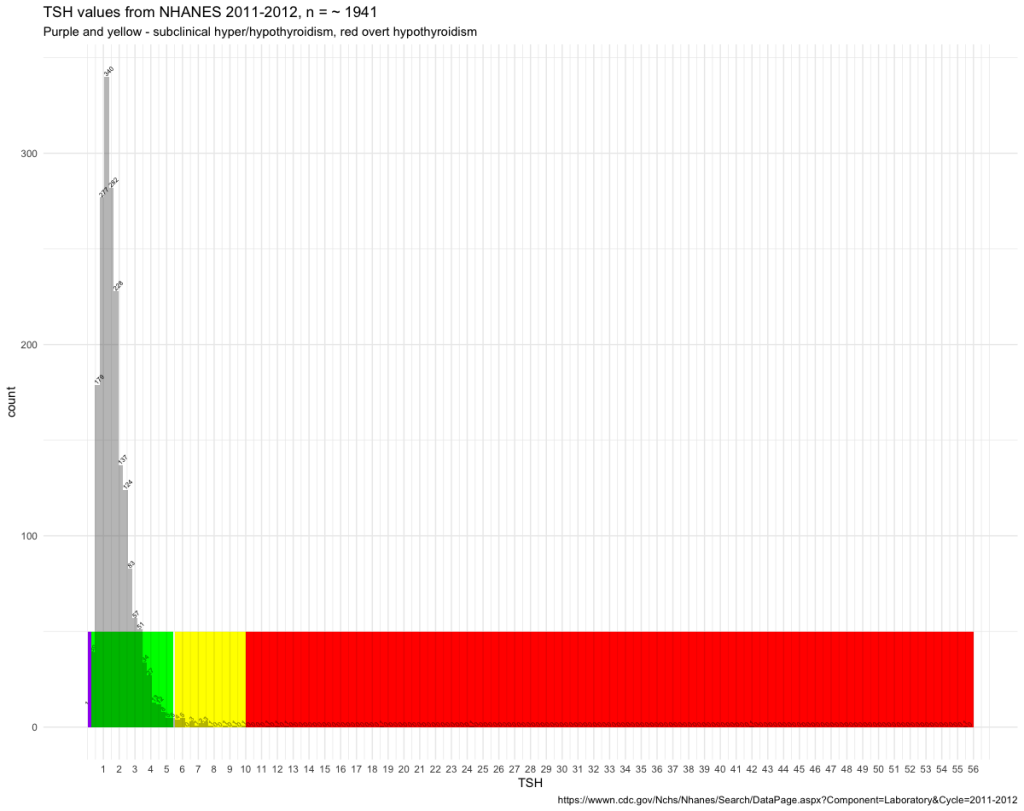
Using another image that has been changed logarithmically shows how few persons you may find in each of the bars:
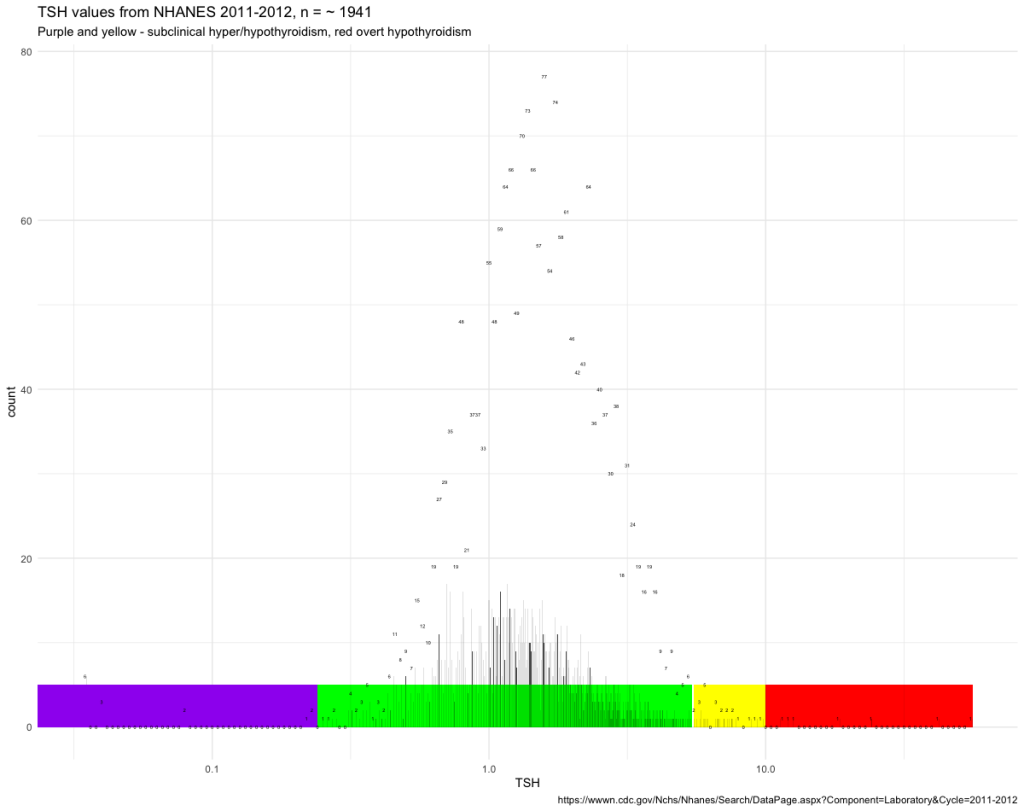
These images show how individual the TSH values are and that you should not accept an unsuccessful treatment. We have not yet looked at the two important hormones T4 and T3 but I will promise you that they will add to the individuality.
For now two tables with the raw data for the different figures that we will touch upon:
